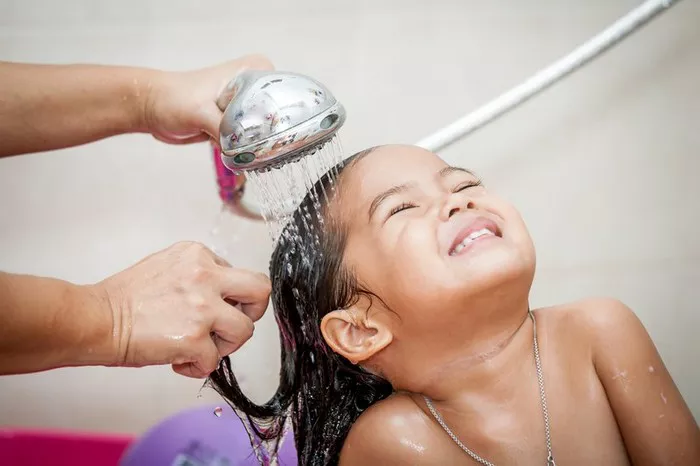Rebonded hair looks sleek, shiny, and perfectly straight, but maintaining it requires a special touch. After the rebonding process, your hair becomes more delicate and prone to damage. That’s why proper aftercare is essential to preserve its beauty and health. In this guide, we will walk you through everything you need to know about how to care for rebonded hair at home. We will also share some important Hair Health Advice to ensure your strands stay strong and stunning.
Understanding Rebonded Hair
Rebonding is a chemical hair treatment that restructures your hair bonds to achieve straightness. While the results are gorgeous, the process leaves your hair vulnerable to breakage, dryness, and split ends if not maintained properly. The chemical alteration changes your hair’s natural state, so ordinary hair care routines are not enough.
Immediate Aftercare: The First Few Days
The first 72 hours after rebonding are critical. During this time, your hair is extremely fragile. Here’s what you must avoid:
- Do not wash your hair.
- Avoid tying your hair or using clips.
- Stay away from heat styling tools.
- Do not tuck hair behind your ears.
Being extra cautious during this period sets the foundation for healthy, long-lasting straightness.
Daily Hair Care Routine
Establishing a consistent and gentle daily hair care routine is crucial for rebonded hair.
Use a Mild Shampoo
Choose sulfate-free and paraben-free shampoos. Harsh chemicals can strip moisture and make your hair brittle. Wash your hair no more than two to three times a week to retain natural oils.
Condition Religiously
After every wash, apply a deep conditioner to restore moisture. Focus on the mid-lengths to ends of your hair where it tends to be drier.
Cold Water Rinse
Always rinse your hair with cold water. It seals the hair cuticles, locking in moisture and adding shine to your strands.
Weekly Hair Treatments
Rebonded hair thrives with extra nourishment. Set aside time once a week for special treatments:
Deep Conditioning Masks
Use a hydrating mask rich in keratin, collagen, and natural oils like argan or coconut. This replenishes protein and moisture levels in your hair.
Hot Oil Therapy
Warm up some coconut or olive oil and massage it gently into your scalp and hair. Leave it on for at least an hour before washing off. This treatment strengthens hair from within and adds much-needed softness.
Hair Drying and Styling Tips
Heat can be damaging, so you must be cautious while drying and styling rebonded hair.
Air Dry Whenever Possible
After washing, gently blot your hair with a microfiber towel and let it air dry. Avoid rough towel drying, which can cause frizz and breakage.
Use Heat Protectants
If you must use a blow dryer or flat iron, always apply a heat protectant spray first. Keep the temperature on a low to medium setting to minimize heat damage.
Essential Hair Care Products
Your rebonded hair needs the right products to stay healthy and sleek. Look for the following:
- Leave-in conditioners
- Serums rich in natural oils
- Keratin-infused sprays
- UV protectant sprays
Best Hair Care Practices for Rebonded Hair
Following best practices for hair maintenance ensures the longevity of your rebonding results. Avoid frequent chemical treatments like coloring or perming, as they can weaken your hair structure further. If necessary, space them at least six months apart from your rebonding session.
Hair Care Mistakes to Avoid
Some common mistakes can severely harm rebonded hair:
- Skipping conditioner after shampooing
- Excessive brushing when hair is wet
- Using alcohol-based styling products
- Neglecting regular trims
Be mindful of these pitfalls to preserve your hair’s strength and shine.
How to Protect Rebonded Hair While Sleeping
Nighttime care is just as important as daytime routines. Here’s what you can do:
- Sleep on a silk or satin pillowcase to reduce friction.
- Lightly braid your hair or leave it loose to avoid kinks.
- Apply a lightweight serum before bedtime to maintain moisture levels.
Seasonal Care Tips for Rebonded Hair
Summer
UV rays can be harsh on rebonded hair. Use hats, scarves, or UV-protectant sprays to shield your strands when going outdoors.
Winter
Winter air can dry out your hair. Use richer moisturizing products and avoid exposing your hair to cold winds without protection.
Importance of Regular Trims
Regular trims every six to eight weeks help prevent split ends from traveling up the hair shaft. Maintaining the ends neat and healthy ensures your rebonded look stays polished longer.
Professional Treatments at Home
Many salons offer at-home treatment kits for rebonded hair. These often include protein masks, keratin treatments, and strengthening serums. Using these once a month can give salon-like nourishment at home.
Understanding Hair Care Tips for Long-Term Maintenance
Incorporating reliable Hair Care Tips into your routine will keep your rebonded hair healthy for the long haul. Pay attention to your hair’s changing needs and adjust your routine accordingly to maintain optimal hair health.
Conclusion
Caring for rebonded hair at home is all about being gentle, consistent, and attentive. By following the right hair care steps and investing a little extra time into your routine, you can keep your hair looking salon-fresh every day. Remember, healthy hair is happy hair, and with proper care, your rebonded strands will continue to turn heads wherever you go.
Related topics:
- How Often Should You Wash Dreadlocks?
- How to Revitalize Damaged Hair?
- How Often Should You Wash Braids?


